[Herald Interview] Trekking on sacred Paektusan highlands
By Joel LeePublished : Sept. 20, 2018 - 18:20
During a trekking tour of North Korea’s Paektusan highlands in August, Roger Shepherd and his team of international travelers hobnobbed with North Korean guides -- hiking, pitching tents, making campfires, cooking and eating together.
Two Australian women and two Norwegian men traveled with Shepherd, a Kiwi professional hiker and travel writer, on their maiden trip to the Korean Peninsula’s tallest mountain, 2,750 meters above sea level, considered the sacred cradle of the Korean people since time immemorial.
“It was a chance for the North Koreans to work alongside foreigners, doing something totally unique like hiking and getting familiarized with them. Both cultures got a chance to ask each other questions about lives in their countries,” Shepherd told The Korea Herald. “One Australian woman brought with her a photo album from her home, and the North Koreans all enjoyed looking at her house, family members and farm animals in Australia. It was the usual stuff people talk about when they share time together in the mountains.”
Two Australian women and two Norwegian men traveled with Shepherd, a Kiwi professional hiker and travel writer, on their maiden trip to the Korean Peninsula’s tallest mountain, 2,750 meters above sea level, considered the sacred cradle of the Korean people since time immemorial.
“It was a chance for the North Koreans to work alongside foreigners, doing something totally unique like hiking and getting familiarized with them. Both cultures got a chance to ask each other questions about lives in their countries,” Shepherd told The Korea Herald. “One Australian woman brought with her a photo album from her home, and the North Koreans all enjoyed looking at her house, family members and farm animals in Australia. It was the usual stuff people talk about when they share time together in the mountains.”
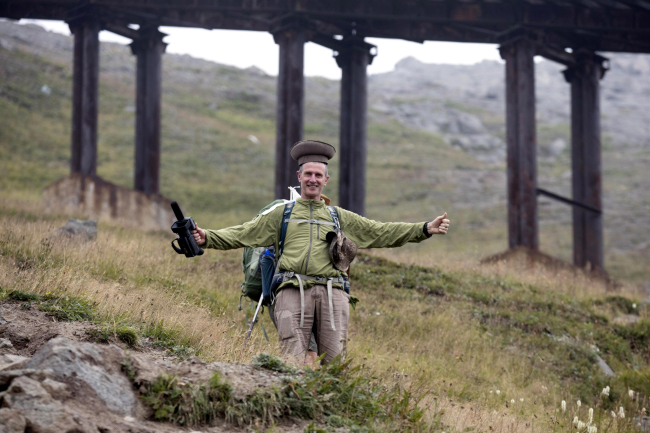
The trip was organized by Hike Korea, a South Korea-based outbound travel company established by Shepherd that offers guided tours of mountainous and rural attractions across the peninsula.
Half of their 13-day expedition saw the group hiking in the highlands in the North’s northernmost region bordering China. They spent three days sightseeing in Pyongyang, including a day trip to the Demilitarized Zone and Panmunjom. The remaining days were spent exploring what was allowed within the Hermit Kingdom.
The group flew from Beijing to Pyongyang, and from Pyongyang to Samjiyon County near Paektusan, a dormant volcano that last erupted in 946. Airfares, accommodations, meals and other expenses were included in the individual fare of roughly 3,500 euros ($4,100).
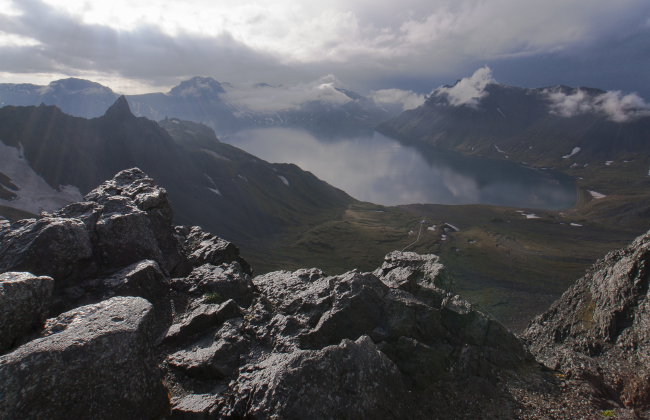
“The inaugural August 2018 expedition went very well. We got to see amazing mountainscapes, and walked across untouched zones for six days. It’s the only such hike offered in the Democratic People’s Republic of Korea and it was the first time anyone had trekked the Paektusan plateau,” said the New Zealander. “Paektusan itself has been visited many times by foreigners. Of course that beautiful place is part of the itinerary, but the rest of the five days are spent in the untouched, unseen terrains of the pristine plateau.”
Paektusan is revered by both Koreas for different reasons.
South Korea considers it hallowed because it was the birthplace by legend of Dangun, the progenitor of the Korean nation founded some four millennia ago, according to the mythology of Korea. North Korea regards it as sacred as its late founder, Kim Il-sung, set up a military base there for his anti-Japanese, pro-independence guerilla warfare during the 1910-45 colonial rule. The North also claims that late leader Kim Jong-il, the father of the current leader, was born there, although historians say he was born in Vyatskoye, Russia.
On Thursday, as a symbol of reconciliation and cooperation, South Korean President Moon Jae-in and North Korean Leader Kim Jong-un rode up the mountain and stood together at Chonji, or Heaven Lake.
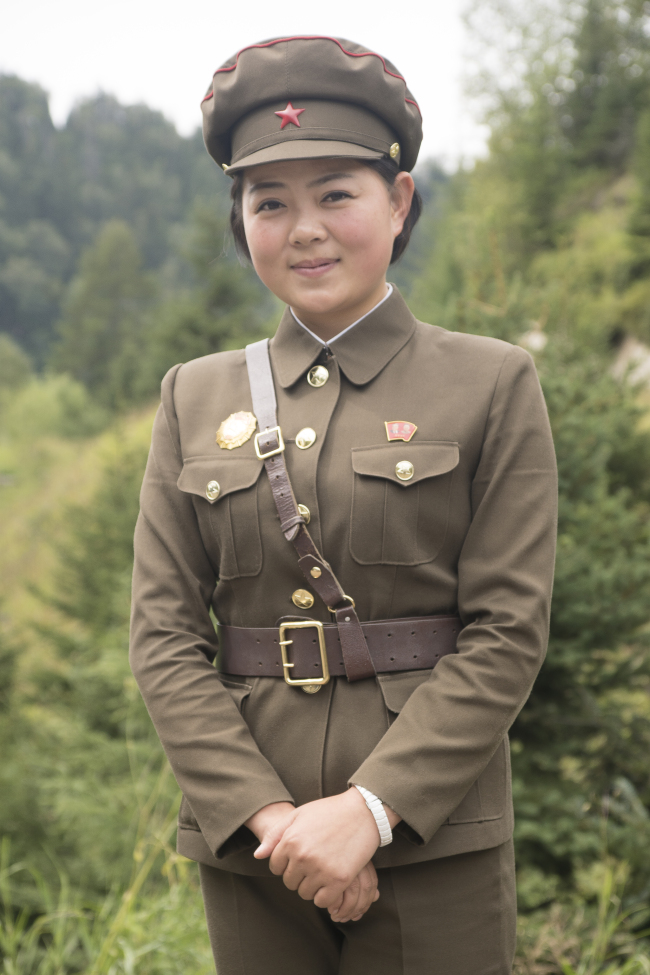
Shepherd’s trips, which are to take place four times next year, one per month from June to September if everything goes according to plan, follow the trails of Korea’s anti-Japanese fighters from the early 20th century. “Small bands of Korean insurgents made their raids across the border from Manchuria, collected information on the Japanese and occasionally confronted them. Their hideouts have been preserved as cultural relics, and we visit them on route.”
Shepherd moved to South Korea in 2010 after hiking the same mountain range’s trail in 2007, which he wrote about in “The Baekdu Daegan Trail Guide Book,” Romanizing the name in accordance with guidelines used in the South. He has also authored, in English, numerous books and articles with pictures and illustrations detailing his hiking experiences throughout the peninsula.
He has traveled to North Korea over a dozen times since 2011, and photographed and documented the mountain range’s highlands. His narratives shed light on the country’s unique mountain culture as well as cross-cultural exchanges between the North and South.
Shepherd has also exhibited his works in Pyongyang and Seoul, and currently liaises with relevant ministries of both Koreas.
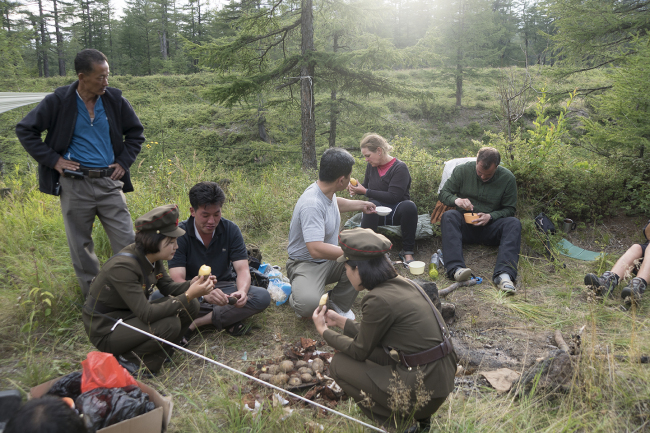
“The circuit covers Paektusan peak itself, followed by a descent into the caldera to taste the waters of Chonji Heavenly Lake, and ascending out to trek on the plateau,” according to Hike Korea.
The band of sojourners “moved across the plateau covered with volcanic soils and grasses, before ducking into endless horizons of Larch pine forests and wildflowers.” The region, according to witnesses, is home to wild deer, bears and even tigers and leopards.
Shepherd’s group camped out at historic sites designated by the North Korean government and pitched their tents from one spot to another as they traversed through the spectacular scenery. They cooked food delivered to them at each camp, and in front of “open flames of campfire,” sang songs with the North Korean guides.
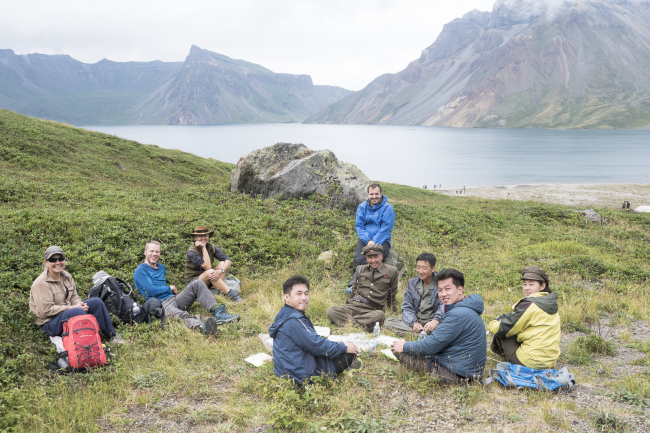
On the regime’s intentions in attracting tourists, Shepherd opined that Pyongyang “would like to open up more, but on their terms, and not as a complete sellout as some other nations demand they do.”
From 1998 through 2008, during the thaw in inter-Korean ties initiated under Seoul’s “Sunshine Policy” of engaging the North, South Koreans were allowed to travel to the North’s Kumgangsan on the east coast, albeit in a highly regulated and surveilled manner, through package tours developed by corporate giant Hyundai Group.
The possibility of extending tours to Paektusan and the city of Kaesong was discussed in 2007, but with the killing of a South Korean tourist by North Korean soldiers at Kumgangsan in 2008, all tourism from the South stopped.
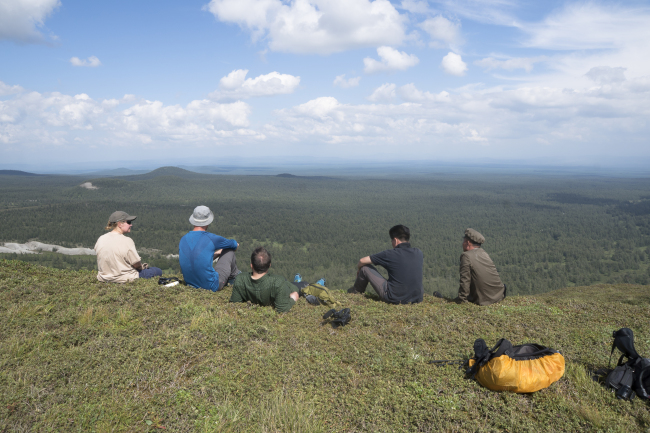
Meanwhile, the North filled the void with Chinese partners, developing attractions and infrastructure at Paektusan and the city of Sinuiju, North Pyongyan Province, which borders the Chinese city Dandong. British, American, German and other Western companies also launched various programs touted as “communist tourism.”
The death in June last year of Otto Warmbier, an American university student who traveled to North Korea in January 2016 and was returned home in a coma, led to a ban of American travel to the communist country.
Tourism is not among the items sanctioned by the international community, Shepherd explained, adding that Americans and journalists -- except those authorized by the regime -- cannot participate in his tours. “It is unfortunate, because most of my queries come from Americans. Sanctions only make the will of the North Koreans stronger.”
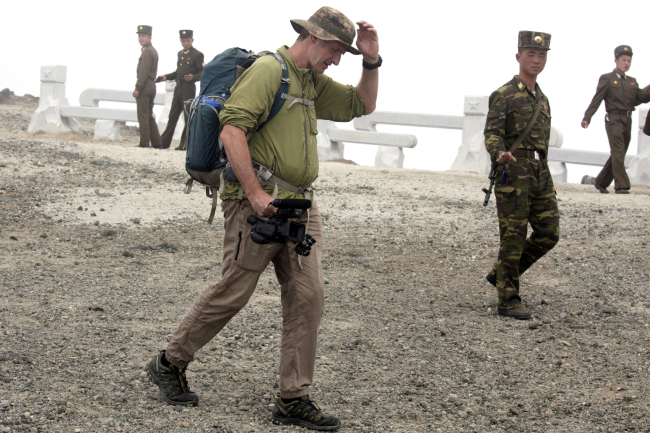
The adventurer noted that Samjiyon County is under massive renovations -- with new hotels, ski resorts, electrical grids, water pipelines, a train station and airport to be serviceable by 2020. The regime is also actively constructing tourism infrastructure in Wonsan on the east coast and Kumgangsan.
“I think we’ll see many tourists going to this region by plane or train to scale Mount Paektusan. Hopefully there might be an opportunity for some of them to go on overnight treks on the plateau too, which is what I plan,” he said.
“I am currently interested in developing a few trails on the plateau. If my tours grow and other operators start using the area, then trails and signposts will need to be developed to stop people wandering into the highlands that have delicate ecosystems. I’d also like to build rustic, log cabin-style shelters for hikers to sleep in, cook and rest, as it rains a lot there.”
By Joel Lee (joel@heraldcorp.com)


















![[Today’s K-pop] BTS pop-up event to come to Seoul](http://res.heraldm.com/phpwas/restmb_idxmake.php?idx=642&simg=/content/image/2024/04/17/20240417050734_0.jpg&u=)